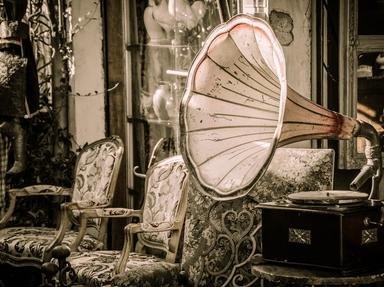Quiz Answer Key and Fun Facts
1. Tobacco grew like a weed (so to speak) in the Americas for thousands of years before Europeans got hold of any. Native North and South Americans were ingenious in figuring out different ways to consume it for ritual, medicinal reasons, for fun and inevitably, because they got really crabby and nervous if they didn't. What was about the only way they didn't use tobacco?
2. Although Christopher Columbus is credited with being the first European to see tobacco smoked, it was two real idiots, Rodrigo de Jerez and Luis Torres, who found it attractive enough to bring home to Spain in 1493. How did these early explorers describe the act of consuming tobacco? They said the Native Americans ...
3. In the 1500s, the Portuguese and Spanish begin cultivating tobacco in the New World and selling it back home. In France, Queen Catherine de Medici's migraines are cured by tobacco infusions administered by Jean de Nicot. Sir Walter Raleigh major promoter of the habit in London, gives some to Queen Elizabeth I. He got his tobacco from Sir Francis Drake. Sir Francis probably got his from his cousin, Sir John Hawkins. What was Sir John's other great claim to fame?
4. It's 1604 and tobacco, the original exotic luxury, is cool with the fast-and-rich set. The Spanish prefer cigars but most other Europeans (and Asians) are smoking long-stemmed pipes. But one monarch sounds a sour note. He writes, " (It is)...a custom loathsome to the eye, hateful to the nose, harmful to the brain, dangerous to the lungs..." Who was this far-sighted king?"
5. Although smoking was 'in', it remained a luxury until the 1620s, when the first serious shipments of fine Virginia tobacco started rolling in. By the 1640s, England was importing near 1.5 million pounds of it a year. The Virginia Company and the Virginians themselves, were making a huge profit. What was Virginia tobacco used as in Virginia itself?
6. By the end of the 1600s, those long-stemmed pipes were on their way out. A new way of consuming tobacco was becoming fashionable at the French court. It took Europe by storm. What was it?
7. The French did it again in the 1790s. That's when they started smoking "cigaritos", small cigars. By the 1830s, they were paper-wrapped. Some say they got this idea from the Russians and the Turks, but more people claim that they originated with Spanish beggars. How did these unfortunates develop their own peculiar smokes?
8. The 19th century really belonged to the cigar and to male smokers. The only women who smoked were prostitutes, actresses and bluestockings. Cigars had their own time frame in elegant society. When was this?
9. By last quarter of the 19th century, especially in America, smoking started to receive some serious flak from one particular interest group. What was it?
10. Tobacco was down, but it wasn't out. It got the proverbial shot in the arm when cigarettes began to be mass marketed at the beginning of the 20th century. During World War I they were dumped on the troops in massive numbers. Adopted as the 'soldier's smoke' because of their cheapness, accessibility, ease of transport and the rapidity with which they could be smoked (three on a match...), by the end of the war what new social groups began to show signs of tobacco addiction?
11. In the 1930s the first modern and comprehensive anti-smoking campaign is launched in a country in Europe. Over the decade and into the next, smoking is banned in all government buildings and then on streetcars and trains. Advertising tobacco products is severely curtailed. Soldiers and policemen can't smoke on duty or on short breaks. It's forbidden to sell tobacco products to women in restaurants, and anyone under 18 caught smoking faces a stiff fine. The leader of the country claims that tobacco is the 'red man's revenge for having been given alcohol'. Where are we?
12. After the end of World War II the volume of information about the deadliness of cigarettes grew rapidly. No problem. The tobacco companies bounced back with 'scientific' filter tips and light smokes. One cigarette brand in particular caught the public imagination. By the late 1950s it became a market leader due to its clever 'image' campaign that has lasted more or less intact into the 21st century. Still #1 in the world, we're talking about
13. Not everyone was hypnotised. Eva Cooper was the first person to sue a tobacco company (RJ Reynolds) for the death of her husband. She lost, of course, but when did she give this a try?
14. Lawsuits, taxes, aggressive anti-smoking campaigns and the increasing difficulty of smoking anywhere at all except in the sanctity of your own WC have hit the tobacco firms hard. But they're are not down and out yet! They've found a really clever way to keep up their heads up. What are they doing? They're ...
15. What do Leonard Bernstein, Count Basie, Yul Brynner, Ty Cobb, Ian Fleming, Walt Disney, Betty Grable, Ayn Rand and Lana Turner have in common?
Source: Author
dobrov
This quiz was reviewed by FunTrivia editor
bloomsby before going online.
Any errors found in FunTrivia content are routinely corrected through our feedback system.

